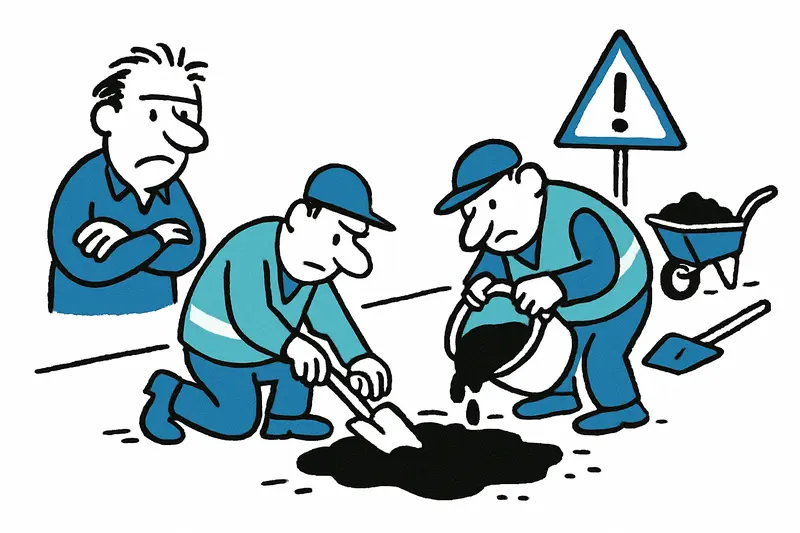In Costa Canyamel, neighbors are now repairing roads themselves and paying for asphalt — while the municipality keeps waiting for solutions.
Between potholes and bureaucracy: How people live in Costa Canyamel
When you drive through the entrance to the Costa Canyamel development in the morning, you immediately notice: something is not right here. Street lamps that are only pretty posts. Sidewalks that are simply missing in some places. And holes in the asphalt where you can almost lose the wheel hub. I talk to residents who have lived here for years — many are residents from Germany, some families, a few retirees who have the sea five minutes away.
Since 2003 the official acceptance of the development has hung in the air. Two decades later, the 'soon everything will be regulated' has become a stubborn status quo. The result: emergency measures instead of reliable infrastructure. Stairs that are not freely accessible, crumbling signage and a sewer system that has never been completed. A neighbor sums it up dryly: 'You drive here very carefully, or you get stuck.'
Initiative – out of desperation
In spring 2024, residents opened their wallets. They paid a local company for 91 tons of tar so that at least the worst potholes could be filled. A clean thing? Not quite: The municipality afterwards issued an invoice for the permit to work on a public street. Paradoxical, but sadly real. Some people said: 'If we wait, we fall apart.' So they acted.
Such actions are not a solution, they are a symptom. Whoever repairs risks trouble with rules; whoever does nothing risks accidents. On Tuesday mornings you can thus repeatedly see small teams in safety vests and with tools — volunteers filling the gaps with provisional material so that children can safely reach the bus stop.
Response from the town hall – vague hopes
The town hall says they are working on an 'emergency solution'. No one becomes more concrete. It sounds like evaluations, expert reports and procedural steps that have occupied three generations of local politicians. For those affected, it is cynical: they want functioning evacuation routes, lighting, clean water and wastewater management. No promises.
And there is a bitter observation: On the one hand money flows into visible projects — like the cycle path on the main road, recently funded with millions. On the other hand, a residential development remains, which is too official to help itself, and too unofficial to receive full support from the municipality.
What now?
A realistic step would be a timetable with clear steps: immediate safety works, a clear cost breakdown, and a binding deadline for the sewer system. Until then, residents have only to drive more cautiously, avoid streetlights like a wind-blown bad hair day, and, at every rainfall, say their prayers a little louder. That is how everyday life sounds when government promises take a long time to mature—and in the end the people themselves must roll up their sleeves.
Similar News

Die Zeit auf Mallorca: Warum die Uhren hier anders ticken
Auf Mallorca läuft die Uhr offiziell anders als die Sonne — ein Erbe aus den 1940er-Jahren, das bis heute unseren Alltag...

Orange Weather Warning for Mallorca: Heavy Rain and Thunderstorms Set the Week
Aemet warns: Monday and Tuesday on Mallorca are under orange alert. Heavy rain, floods, and traffic disruptions are poss...

Life-threatening swimming accident in Ibiza: 73-year-old revived on the beach
During severe storms, a 73-year-old visitor swam despite a red flag. Lifeguards rescued her, and she is now seriously in...

Mummified Body Found in Abandoned House Near Santa Margalida
Between Can Picafort and Son Serra de Marina, teenagers discovered a mummified corpse in an abandoned house. Identity an...

Large Rockfall Blocks Ma-2141 Road Near Sa Calobra
After heavy rainfall, several rock blocks toppled onto the winding Ma-2141 toward Sa Calobra over the weekend. The road ...
